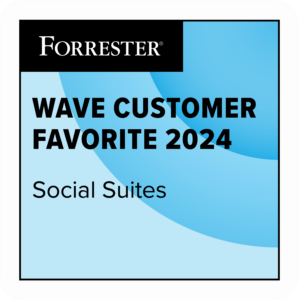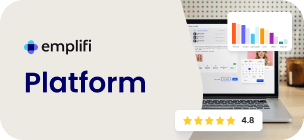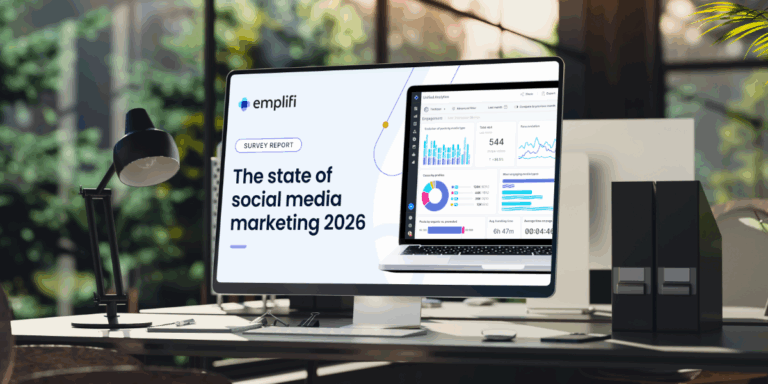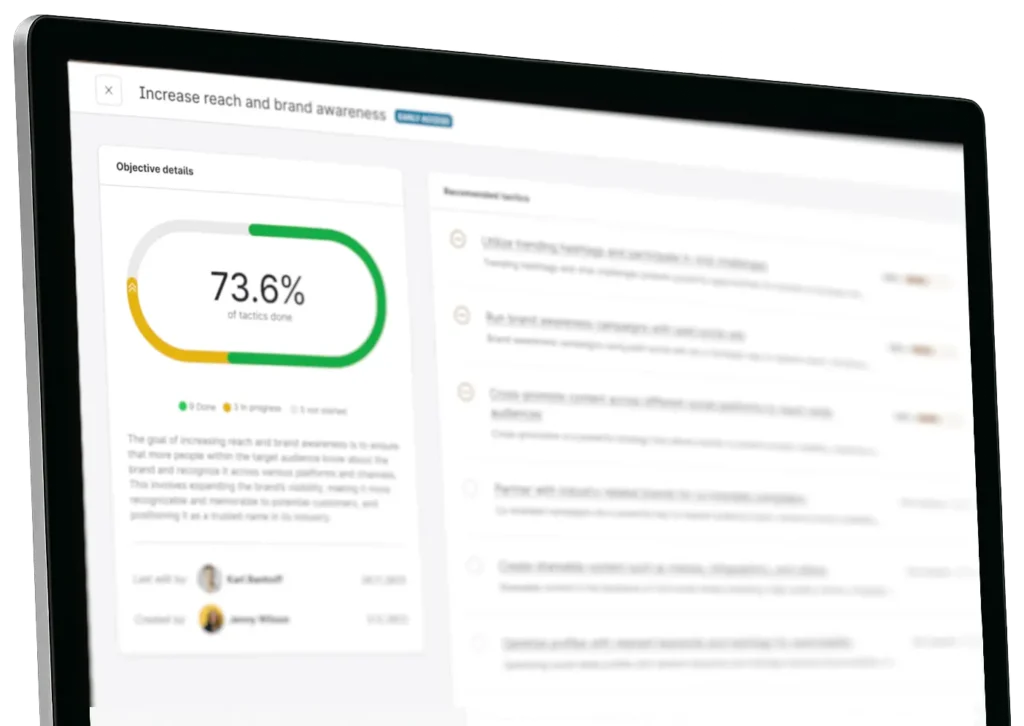Social media has become an indispensable tool for businesses to connect with their audiences. However, amidst the vast amount of online chatter, understanding what your customers truly want can be challenging. This is where social media listening comes into play.
Listening software sifts through the discourse on social media, helping your business learn about your customers and stay attuned to industry trends and preferences to remain competitive.
What is social media listening?
Social media listening refers to the process of monitoring and analyzing conversations and interactions that take place online. A social media listening tool helps you gain valuable insights into customer sentiments, emerging trends, and potential opportunities or challenges.
Ultimately, brands that listen well are brands that lead, because they’re equipped to respond in ways that matter and feel authentic to their customers.
Why social media listening matters
At its core, social listening helps brands move from reactive to proactive. Instead of waiting for complaints to pile up or for a relevant trend to pass by unnoticed, listening tools surface real-time insights that allow teams to get ahead of issues, amplify what’s working, and address concerns before they escalate.
Social listening is especially critical when managing a social media crisis. Early detection of sentiment shifts or sudden volume spikes can mean the difference between a manageable moment and a brand reputation hit.
Social listening also plays a powerful role in customer care. In Emplifi’s recent consumer survey, 35% of users said they expect a brand to respond to social media customer service outreach within one hour. Almost 60% expect a response within six hours. That means brands that don’t actively monitor brand mentions – whether they’re directly tagged or not – risk disappointing their audience, or even losing customers.
Social listening leads to faster resolution and fewer escalations, all of which contribute to stronger brand loyalty.
Social listening vs. social monitoring
It’s easy to confuse social listening with social monitoring. And while they’re absolutely related, the difference between them is significant. Both are essential parts of a strong social media strategy, but they serve very different purposes.
Social monitoring is reactive. It focuses on tracking and responding to direct mentions of your brand, typically in real time. If someone tweets at your customer support handle or tags your brand in an Instagram comment, monitoring tools make sure your team sees it and can respond quickly. Monitoring is critical for reputation management, customer service, and community engagement. But it’s inherently narrow in scope. It’s about what’s being said directly to you.
Social listening, on the other hand, is proactive and strategic. It involves tracking not just direct mentions, but the full spectrum of conversations happening around your brand, your competitors, your industry, and your key topics, whether your account is tagged or not.
Listening goes beyond alerts and responses; it uncovers themes, sentiment trends, emerging issues, and new opportunities you wouldn’t catch through monitoring alone.
Think of it this way:
- Monitoring tells you who’s knocking at your door.
- Listening tells you what’s being said about you in the neighborhood.
This distinction matters because only social listening gives you the context to understand why something is happening. Why are your customers frustrated this week? Why is a competitor’s campaign gaining traction? Why are conversations about a certain product category surging? Listening delivers that broader insight, helping teams across marketing, care, product, and strategy make smarter, faster decisions.
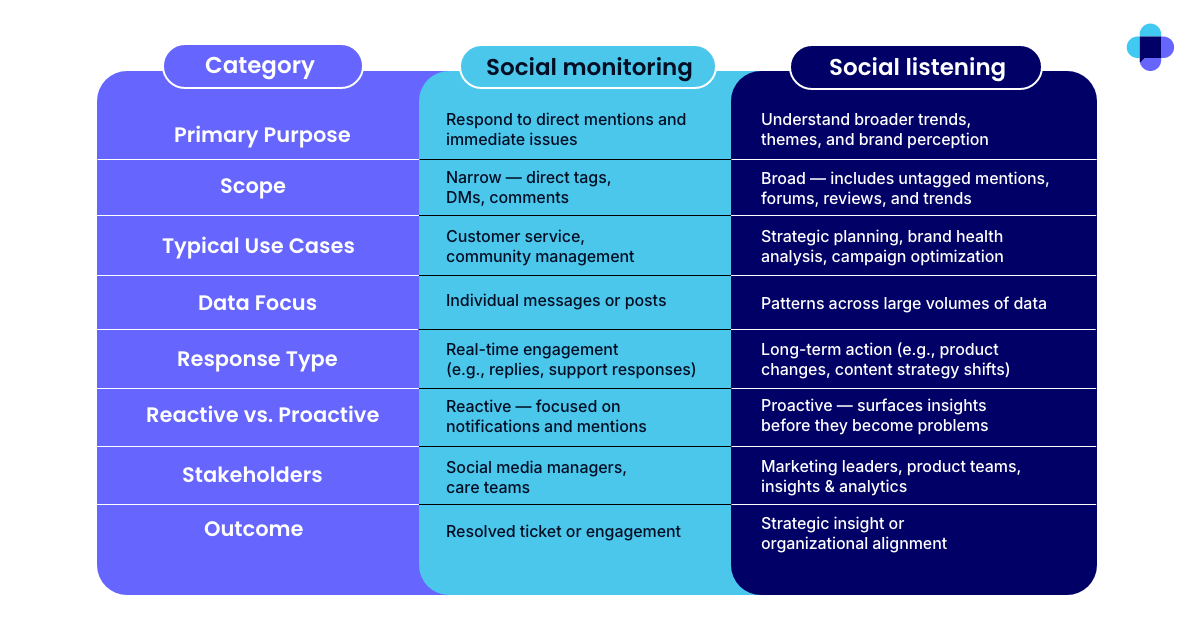
Both social media monitoring and listening are necessary, but only listening provides the depth of insight needed to stay ahead of customer expectations and market shifts. Social listening informs everything from content and campaign planning to product development and crisis response. And when integrated with your workflows, it becomes the foundation of a responsive, customer-driven brand.
Key features to look for in a social listening tool
The best social listening tools do more than monitor mentions – they help brands understand the “why” behind the conversation and turn those insights into meaningful business decisions.
Whether you’re evaluating tools for the first time or reassessing your current solution, here are the key features to look for and why they matter.
1. A 360-degree customer view
To get real value from social listening, you need more than a stream of comments or mentions. Look for a tool that pulls in data from across the entire customer journey – including social platforms, forums, reviews, and support channels – to create a full picture of how people experience your brand.
When teams can see how different touchpoints connect, they’re better equipped to personalize experiences, anticipate needs, and align messaging with what customers actually care about.
2. Consolidated, cross-channel insights
People talk about your brand in lots of places, not just the ones you post on. A good social media listening tool brings together conversations from multiple platforms into a single, unified view. This allows you to spot themes and trends that are consistent across channels, rather than reacting to fragmented or isolated feedback. That consolidation saves time and helps ensure every decision is backed by a full understanding of what’s happening in the market.
3. Clear links between insights and action
Data is only powerful if you know what to do with it. Look for a platform that makes it easy to connect the dots between customer feedback and business outcomes. That could mean flagging a product issue before it escalates, identifying new campaign themes based on audience interest, or sharing insights with your service or product teams to drive improvements.
The goal is to always respond in ways that move the business forward.
In fact, 58% of social media users say it’s important that brands respond to their followers on social media – a clear sign that responsiveness, driven by listening, can directly influence loyalty and purchase behavior.
4. AI-powered filters and prioritization
Modern social listening tools, like Emplifi’s, pull in vast amounts of data, far more than any team can analyze manually. Built-in AI can help by prioritizing the information that’s actually relevant.
AI can do this by automatically categorizing topics, flagging sentiment shifts, and highlighting unusual spikes in volume. This lets teams quickly focus on what matters, whether that’s an emerging crisis, a viral trend, or a surge in positive brand sentiment. The faster you identify these moments, the faster you can act.
5. Competitive and industry benchmarking
Listening to your own brand is important, but it’s only one piece of the puzzle. The ability to benchmark your brand’s performance, sentiment, and share of voice against competitors or industry standards gives you vital context. Are you gaining ground or falling behind? Where are others succeeding that you’re not? These comparisons can reveal gaps in strategy and point to new opportunities for differentiation.
6. Real-time alerts and flexible filters
Timing is everything. Real-time alerts help ensure you don’t miss moments that matter, whether it’s a service issue starting to gain traction or a viral conversation you can tap into.
Combined with flexible filtering by topic, sentiment, region, or channel, these features make it easy to surface high-priority insights and route them to the right teams fast.
7. Seamless integration into daily workflows
Social listening works best when it’s part of your broader workflow, not a separate silo.
Whether you’re publishing content, responding to customers, or analyzing campaign results, your listening insights should feed directly into your processes. That integration not only improves efficiency but also helps ensure that your insights lead to real outcomes, not just reports.
5 steps to get started with social media listening
Getting started with social listening doesn’t require an overhaul of your entire marketing operation, but it does require a thoughtful plan. Too often, brands jump in with a tool before they’ve identified what they want to learn or what they’ll do with the insights. That leads to dashboards filled with data, but no clear path to action.
Whether you’re new to social listening or looking to formalize your approach, the key is to start with clear goals, stay focused on what matters to your audience and your business, and put processes in place to ensure the insights don’t get lost in the shuffle. Here’s a step-by-step approach to building a listening strategy that actually drives impact.
Step 1: Define your social media listening objectives
Setting clear goals is crucial for effective social media listening. It’s not just about collecting data, but knowing what to monitor and how to interpret the information you gather. Whether that’s brand awareness, customer engagement, lead generation, or managing your reputation, social media listening can help you achieve your goals.
Consider that nearly two-thirds (64%) of social media users say they follow brands to hear about promotions, while 42% want to see content from real customers. Knowing which of these motivators align with your audience can help you build listening goals that are tailored to what drives engagement and action.
Step 2: Choose the right tools
With so many options available, it’s important to select a social listening tool that aligns with your business goals, target audience, and budget. The right tool can help you monitor social media conversations, track brand mentions, and identify trends and opportunities.
By taking the time to research and compare social listening tools, you can find one that meets your specific needs and empowers you to make informed decisions that drive results.
Step 3: Identify relevant keywords and topics
A well-designed query helps filter out irrelevant noise and focuses on capturing relevant conversations, sentiment, and trends.
Effective social media listening queries help businesses track competitors, identify gaps in their industry, and stay ahead of emerging trends to make informed decisions, improve their social media presence, and, ultimately, drive business growth. You can build your queries with any keyword, #hashtag, or @mention.
Step 4: Monitor and analyze data
AI helps teams interpret large volumes of data without manual sorting. Once you’ve set up your keywords and sources, AI can begin clustering feedback into categories, surfacing unusual patterns, and identifying sentiment anomalies that human teams might otherwise overlook. It acts as an always-on assistant that highlights what deserves your attention and filters out what doesn’t.
Step 5: Act on insights
It’s important not to stop at simply gathering data. Be sure to take action based on the insights gained and measure the results of those actions. This can involve changing your messaging, refining your content, or adjusting your targeting to improve engagement and reach your business objectives.
Another key is to recognize that social media listening is an ongoing process. You should regularly revisit your goals and strategies to ensure they remain aligned with your business objectives.
How social listening works (step by step)
Social listening tools operate behind the scenes to help brands turn raw online chatter into actionable insights. Here’s a step-by-step breakdown of how the process works:
1. Data collection
The tool scans a wide range of online sources – including social media platforms, forums, blogs, news sites, and review platforms – for mentions of selected keywords, phrases, hashtags, or brand names. This can include direct mentions, brand nicknames, competitor references, and even indirect product discussions.
2. Filtering and categorization
Once collected, the listening tools filter and categorize the data using natural language processing (NLP) and machine learning. This step weeds out irrelevant noise (like spam or duplicate content) and begins sorting mentions by topic, sentiment, location, language, and platform. Custom filters can be applied to focus on specific regions, product lines, or customer segments.
3. Sentiment and context analysis
AI-driven sentiment analysis goes beyond labeling mentions as positive or negative. Iit can detect emotional intensity, sarcasm, and shifting tone over time. Beyond that, it can even adjust based on evolving language and cultural cues. This allows for a much more accurate and dynamic understanding of how people feel, rather than relying on static keyword logic alone.
4. Visualization and insights
The cleaned and categorized data is then translated into dashboards and reports that spotlight trends, spikes in conversation, influential voices, and opportunities for engagement.
AI can play a major role in this process by helping to surface anomalies, highlighting key topics, and prioritizing what deserves immediate attention.
5. Integration with workflows
The final step is where the real value is unlocked: turning insights into action. The best social listening platforms integrate directly with publishing tools, care systems, and CRM platforms, allowing marketing, support, and product teams to respond quickly, inform decisions, and track the impact of their efforts in one connected system.
5 ways to measure social media listening
Social media listening is becoming particularly critical for brands to understand how their target audience perceives their products or services and to stay relevant and engaged with their younger demographic.
Gen Z and Millennials are not only highly active on social media but are also the most likely to make purchases through it – 53% of Gen Z and 56% of Millennial social media users had done so in the past three months, according to Emplifi’s research.
Especially for brands targeting these demographics, social listening is tied directly to revenue. To analyze your brand’s impact on social media, simply measure these five key aspects using your social media listening tool:
- Share of voice: Monitoring share of voice, or the percentage of conversations related to a brand compared to competitors, can help brands understand their position in the marketplace and identify opportunities for growth.
- Sentiment analysis: Understanding sentiment is crucial because it provides insight into how people really feel about your brand, product, or topic of interest. By tracking sentiment, businesses can adjust their messaging or approach to better connect with their audience and provide a valuable customer experience.
- Engagement metrics: These help you understand how people are interacting with conversations about your brand. Track comments, shares, mentions, and replies to see what’s resonating or raising concerns. Spikes in engagement can signal trending topics, while dips or negative reactions may highlight issues to address.
- Trend identification: Social listening helps you spot emerging topics, hashtags, and themes gaining momentum in your industry. By identifying these trends early, you can join relevant conversations or even shape campaigns around what your audience cares about right now.
- Influencer engagement: Tracking the engagement levels of social media influencers or brand advocates can help brands identify potential partnerships and track the effectiveness of influencer marketing campaigns. If you’re considering incorporating influencers into your marketing strategy, understanding your budget is key.
Social media listening success stories
Hardee’s
By utilizing Emplifi’s social media listening tool, Hardee’s was able to leverage a moment when online users were already discussing their restaurant. The tool detected a surge in conversations, alerting Hardee’s social media managers to jump online and see what the buzz was about.
Taking advantage of this opportunity, Hardee’s responded with a viral tweet that resulted in an impressive increase of 8K followers and over 8 million impressions, with nearly 18K retweets. By leveraging the power of social media listening and responding quickly, Hardee’s capitalized on this social media moment and significantly boosted their online presence.
Domino’s
Domino’s, the popular pizza chain, utilizes the Emplifi Social Marketing Cloud to provide real-time responses to its customers.
With this platform, Domino’s is able to monitor and analyze customer feedback across various social media platforms, including Facebook, Twitter, and Instagram, using an automatic keyword search. By properly leveraging a social media listening tool, Domino’s was able to automatically weed out 97% of posts to pinpoint the ones that need attention.
The takeaway
Social media listening is no longer a luxury; it’s a necessity for any brand that wants to thrive and succeed. It’s a powerful tool that allows brands to understand and connect with their audience in meaningful ways.
As social conversations grow more complex and fast-moving, AI is an essential part of getting listening right. It empowers brands to make sense of thousands of data points in real time, delivering insights that are clear, actionable, and connected to broader business goals. The brands that harness AI in their social listening strategy will be the ones who respond faster, adapt smarter, and connect more meaningfully with their audiences.
Overall, by keeping a pulse on the conversations happening on social media, brands can gain valuable insights into their customers’ needs, preferences, and pain points. Social media users are increasingly making it their primary touchpoint – 39% say it’s their preferred way to engage with a brand’s news and content, ahead of websites and email. With expectations this high, social listening becomes essential not just for reactive service, but for proactive experience delivery across the entire customer journey.
If you’d like to learn more about how Emplifi’s comprehensive social listening and monitoring platform can provide everything you need to execute on a social listening strategy that exceeds all your expectations, let’s talk.

